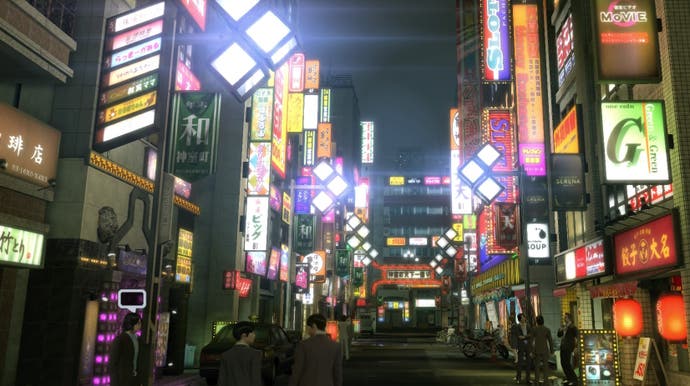How Yakuza and Life is Strange let us revisit their worlds
From neon streets to small-town bedrooms.
The places we visit in games are usually one-off affairs; we shoot or puzzle ourselves through a level and are done with it, always impatient to get to the next stage and exciting new sights. Many games recognise that virtual spaces are more than just levels whose walls funnel us through a series of obstacles. They allow us to spend time exploring or simply being in those spaces. Many RPGs, for example, let us return to locations we visited dozens of hours earlier, perhaps subtly changed by the intervening time or our actions. In the Animal Crossing series, the miniature world changes subtly in our absence, and NPCs will even admonish us for staying away for too long.
Usually a virtual place vanishes into the ether once we put away a game. They may continue to exist in our minds, but they're frozen in time; they have no historical dimension. Some virtual places, however, appear to exist in-between games almost independently.
The Legend of Zelda games have always alluded to the lost worlds of former entries through recurring names, musical themes or visual clues. Breath of the Wild takes this a step further by revealing the ruins of structures familiar from earlier games, like Lon Lon Ranch or the Temple of Time, to the diligent player. Nostalgia is as intricately tied to the passage of time as history, so it's no surprise that the two are near indistinguishable in BotW. Not unlike those in Zelda, the events taking place in the Dark Souls series are spread out over millennia, far enough apart that the fact these games are set in the same world isn't immediately apparent. Exploring Irithyll of the Boreal Valley in Dark Souls 3 eventually leads to the realisation we are in fact in a strikingly altered Anor Londo, ascending the same steps we're already familiar from the very first game.
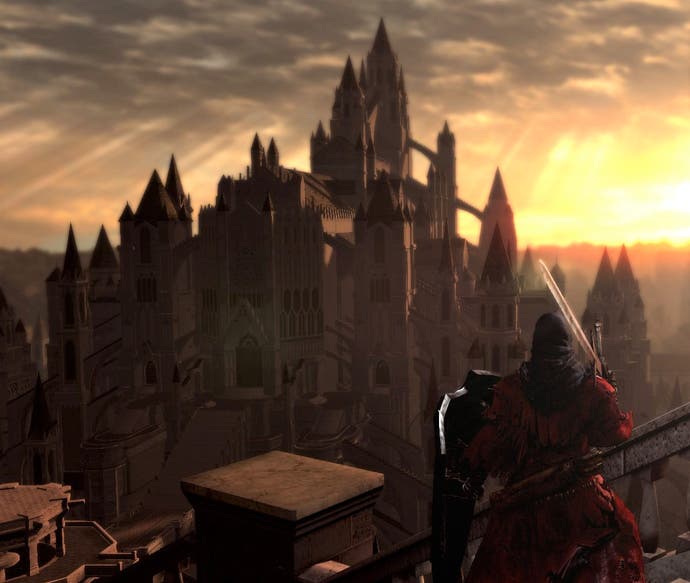

A few games games, however, don't merely allude to long gone worlds in a few memorable moments, but build whole games around recurring, intimate and increasingly familiar places. The prime example of this is perhaps the Yakuza series' pivotal setting, the Tokyo red-light district Kamurocho, a fictionalised version of Kabukichō. Long-time players of the series have revisited Kamurocho every few years with each new entry until they grew intimately familiar with its neon labyrinths.
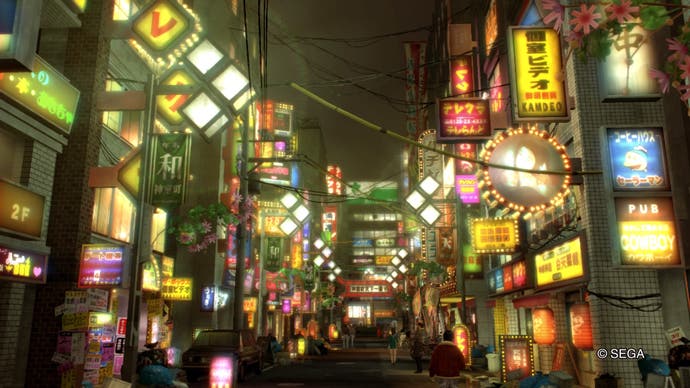


Except for the Kiwami remakes and the prequel Yakuza 0, which is set in 1988 and was released in Japan in 2015, the Yakuza games are set in the year of their release. As such, Kamurocho was originally meant to be experienced in the "present", and thus creates the overwhelming illusion of existing in parallel to the "here and now" of our everyday lives. Since history is seen retroactively as patterns that become clearer with distance, the long-time players immersed in Kamurocho as a city living alongside them hardly experience Kamurocho as a historical site. Kamurocho changes, but it does so slowly and incrementally, mirroring our own subjective experience of history as it unfolds around us.

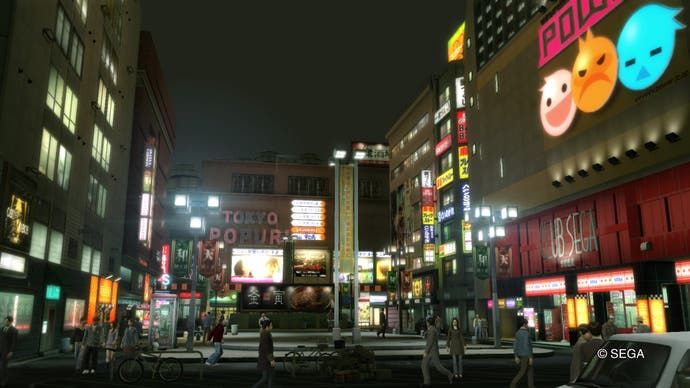
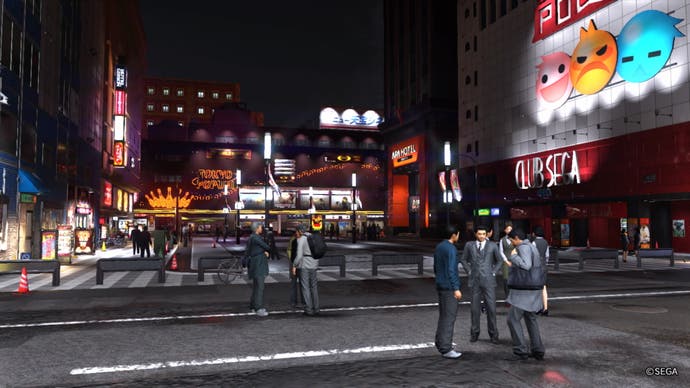
If we look at Kamurocho as seen in Yakuza 0, Yakuza (Kiwami) 1 and Yakuza 6 side-by-side, set decades apart in 1988, 2005 and 2016 respectively, those changes become more pronounced. Many, both big and small, are incidental to the central plot. Streetlights are replaced, buildings are torn down and new ones built in their place, restaurants and franchises open and close again. The advance of technology leaves its mark as phone booths become obsolete, ads are delivered via enormous digital screens and archaic telephone clubs are replaced by live chat businesses. In a place as detailed and visually overwhelming as Kamurocho, many of these incremental developments may easily be missed.
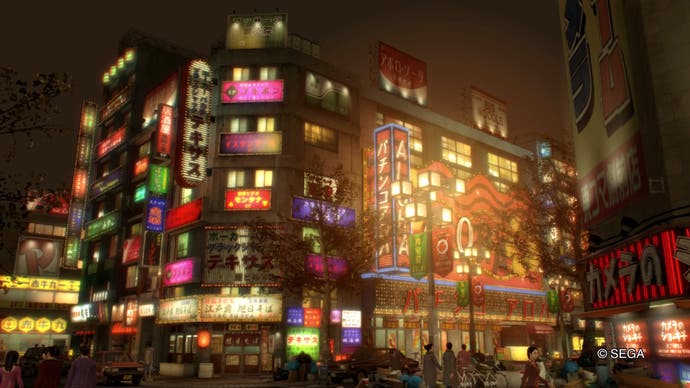

Other changes are intimately tied to the story of Kiryū Kazuma and the Tojo Clan. Yakuza 0, for example, doubles as an origin story for Kamurocho's landmark building throughout the whole series, the Millennium Tower. At the centre of the area destined for this skyscraper sits the unassuming Empty Lot around which the entire plot of Yakuza 0 revolves. Little Asia, too, is entirely transformed from a claustrophobic tangle of back alleys in Yakuza 0, to the sumptuous power centre of the Saio Triad in Yakuza 6. These major changes leave substantial areas of the district almost entirely unrecognisable, challenging those familiar with the Kamurocho of previous games to readjust their mental map, and inviting them to explore or simply take in something entirely new as they refamiliarise themselves with each new iteration.
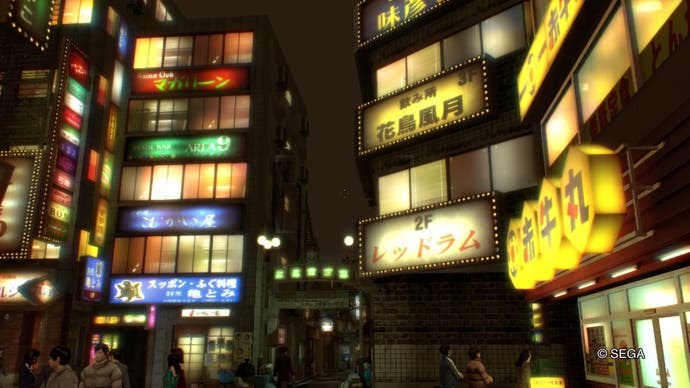
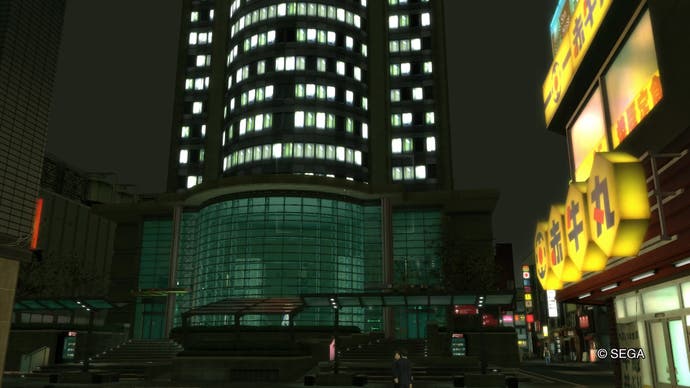
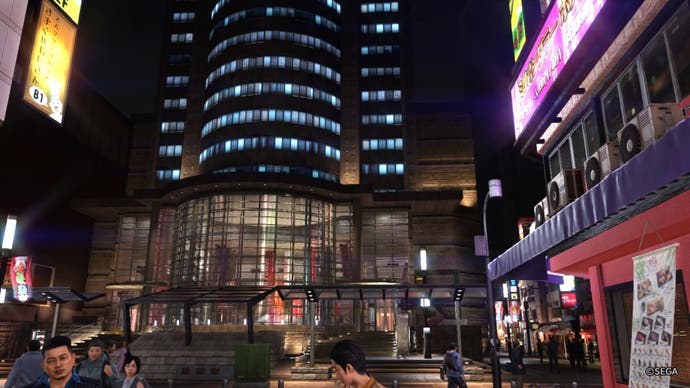
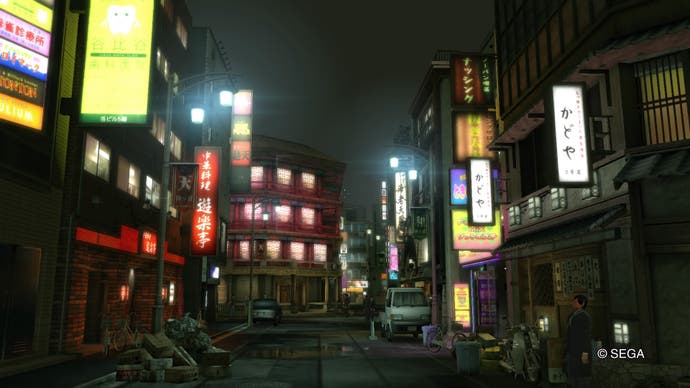
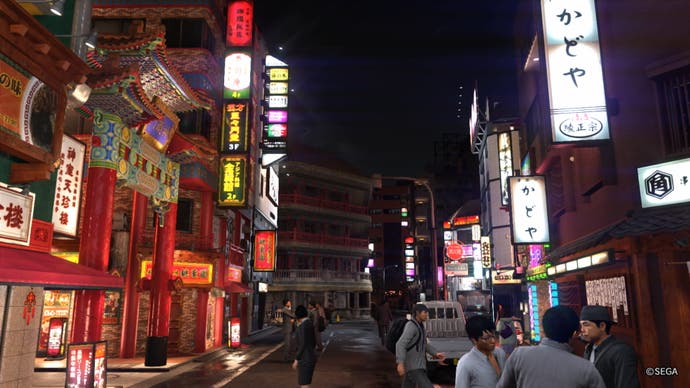
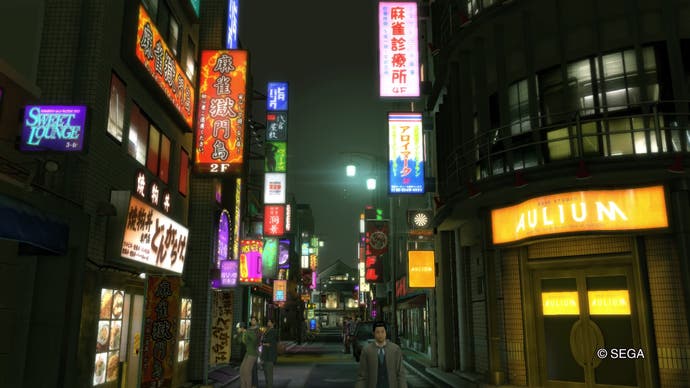
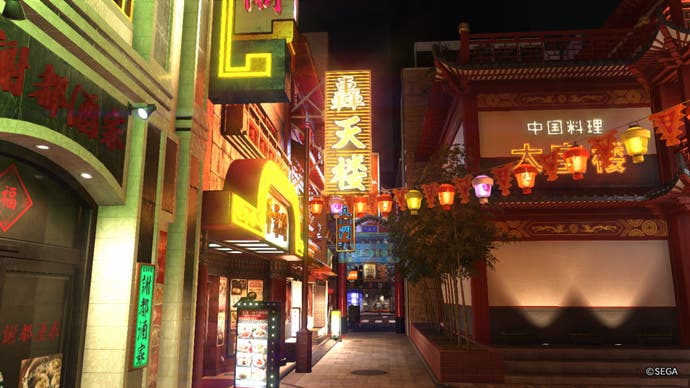
Spanning only a single district and less than three decades, the Yakuza series' focus is already quite narrow as far as historical perspectives go. Compared to the intimate spaces and time scales of an entirely different series, however, Kamurocho appears like a locus of world history. In the episodic time-travelling adventure Life is Strange and its prequel Before the Storm, we witness the events that change the lives of teenagers Max Caulfield and Chloe Price over the course of just a handful of years. Arguably the heart of the entire series is the Price house, and especially Chloe's bedroom, which we visit several times across Chloe's teenage years, and even an alternative timeline, in which Chloe had to give up her upstairs room after suffering through an accident that left her paralysed.
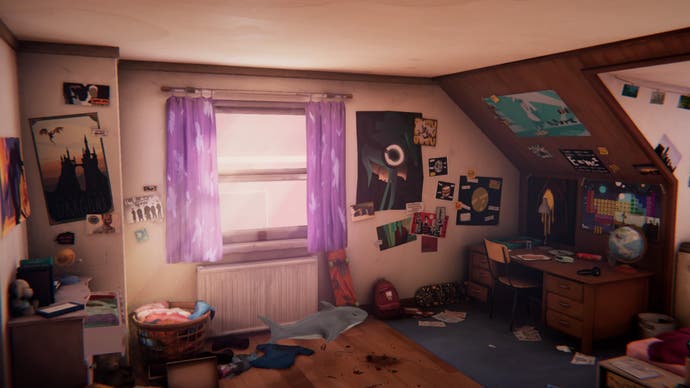
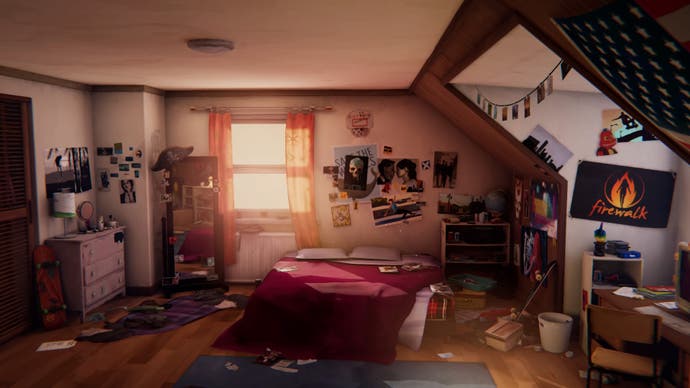

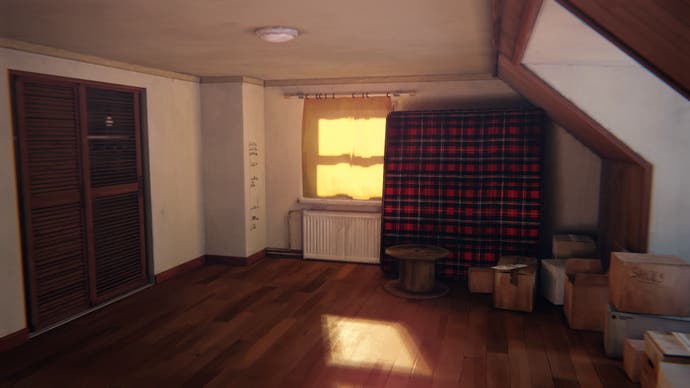
Unlike those of the Yakuza series, the events of LiS are not experienced in chronological order and lack its "presentness" and forward trajectory. When we first enter Chloe's bedroom as Max in the original LiS, it's the smoky den of an angry, punky 19-year-old alienated from her parents and peers alike. At age 16, in Before the Storm, her room reflects a transitional period in Chloe's life, retaining a sense of more carefree childhood days that have not yet been completely drowned out by her rebellious nature and edgy aesthetics. Before the Storm's bonus episode, Farewell, finally shows us Chloe's room at age 14, before the death of her father.

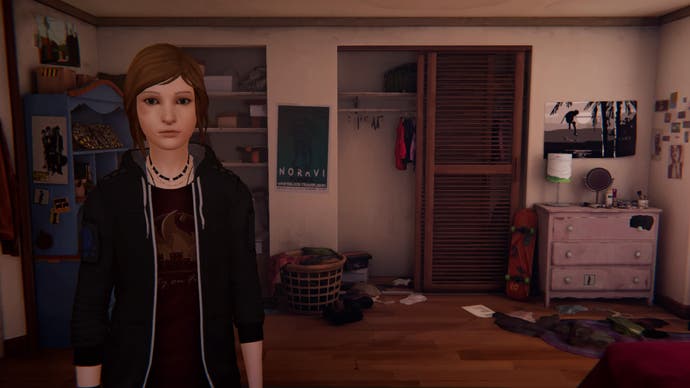

Just like Kamurocho, the various interpretations of Chloe's bedroom create an illusion of the passage of time and lived history. Items disappear or pop up in different spots, furniture is rearranged. Her room has its own "landmarks" that persist across several or even all the different versions, signature items that make it instantly recognisable as 'Chloe's room' despite striking differences: her dresser and desk, graffitis such as the "hole to another universe" or the record of Chloe's growth, skateboards, a Tartan mattress, and of course her US flag.


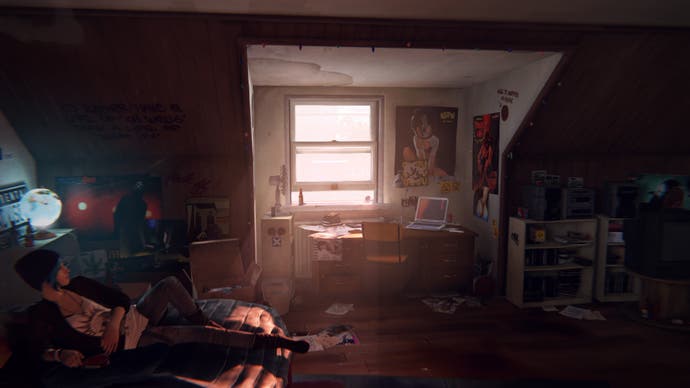
Some changes seem arbitrary in isolation, simply emphasising the passage of time and the lived-in feeling of the room. Many, however, convey meaning. Changing decorations and posters reflect new sensibilities and interests, toys vanishing illustrate a rejection of all things associated with childhood. To anyone familiar with the series, even seemingly innocuous items carry special significance, such as the pirate hat and eyepatch that adorn a mirror in Before the Storm, hinting at her still-lingering attachment to Max with whom she used to play make-believe a couple of years prior.
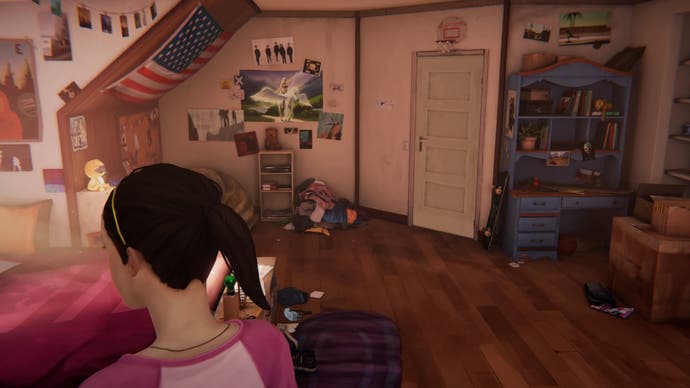
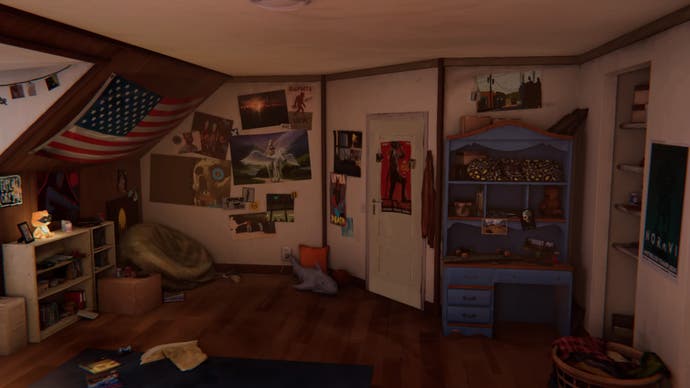
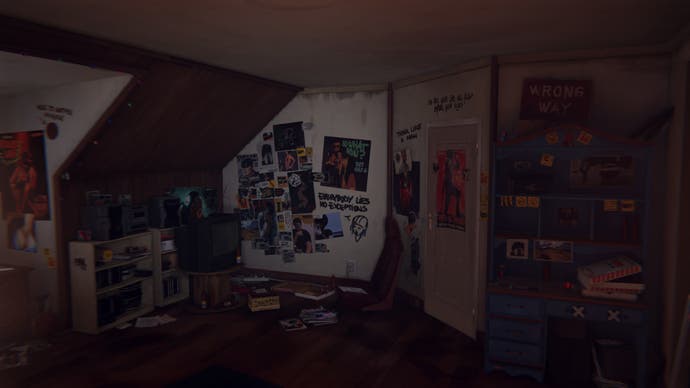
Despite their obvious differences, virtual places like Kamurocho or Chloe Price's bedroom share many similarities in the way their individual versions contrast and resonate with each other. Both strike a careful balance between noise and meaning as well as new and old that mirrors our own experience of accident and purpose, change and stasis in our surroundings. Too much change, and the carefully upheld sense of continuity and identity is fractured. If too much remains unchanged, on the other hand, there can be no strong illusion of history.
Individual spots, of course, may be virtually unchanged, creating comforting islands of familiarity like Kamurocho's Serena bar or Chloe's furniture. Or they may be unrecognisable, challenging both our memories and our imagination: how did these spaces fit together previously, and what may have happened in the meantime? Either way, change is contained within stable frames of reference, whether it's the basic layout and slanting ceiling of Chloe's room or the street plan and outlines of Kamurocho.
Our brains have a habit of filling in the blanks and connecting the dots. Even a single snapshot capturing a single instant will provoke our mind to imagine a before and an after, and that is doubly true for these virtual spaces we get to explore and revisit in a variety of incarnations. Of course, neither Kamurocho nor Chloe's room have any kind of continuity outside of the games we encounter them in, but we cannot help but perceive these places as existing in-between games and throughout time, and the illusion is only reinforced with each visit. Even more than most virtual places, they eventually begin to exist in our minds as much as on our screens.
